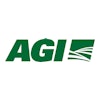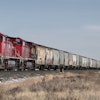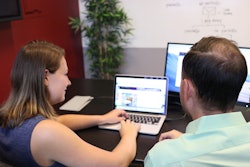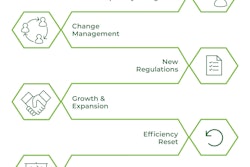
Time is at a premium for modern feed manufacturing and grain handling businesses. When there is feed to make, grain to ship, clients to attend to, and paperwork to fill out, responsibilities like training and aspirations like skill development can easily get pushed to the back burner. The permeation of technology into the industry and our lives offers a solution.
Digital training and education comes with advantages that can be maximized by companies both large and small. First, it gives a trackable, affordable and non-intrusive way to train employees on the information needed to keep a facility running safely and efficiently. Secondly, it provides a way to educate employees, advancing both their careers and the health of the talent pipeline for a company.
As with any new technology, there are bound to be questions about how it works and what opportunities are out there. The following three programs are different in content but have similar themes on how they function and the benefits they provide users.
Customized for the industry
The grain handling and feed manufacturing industries have always been relatively small fractions of the working population that has an outsized impact on the agriculture supply chain. The niche nature of the business severely limits options for training and educating employees. Training employees with a digital platform offers far more options and customization then the one-size-fits-all solutions of the past.
“We currently offer an online learning management platform we call the AgriSphere Training Center,” explains Frank Byers, president and CEO,AgriSphere, LLC. “The system is specifically designed and configured for each of our clients. That gives us the ability to host not only our training content but any preexisting content the client has or any content that we build for them in a case-by-case or customized basis. It also gives us improved functionality in terms of administration in setting up training tracks, and curriculums, and training packages for things like individualized job descriptions, facilities, divisions, etc.”
For companies that do not need a custom program, associations like theGrain Elevator and Processing Society (GEAPS)andAmerican Feed Industry Association (AFIA)have partnered with universities to offer courses and individual classes that fit the needs of their industries.
GEAPS partnered with Kansas State University to offer 26 courses and six levels of credentials. The credentials are earned by completing a series of courses around a specific topic. After a credentialed program is completed the participant will be presented with a certificate of completion.
“These courses are targeted to anyone interested in learning about the grain industry, grain handling or the processing side,” says Chris Blair, New Cooperative, chair of education committee for GEAPS. “We have classes for those at every level — people just coming into the industry can learn the basics and advanced courses that will be more challenging for people that need them.”
The AFIA also partnered with Kansas State University for the AFIA-KSU 500: Fundamentals of Feed Manufacturing. This five-week course is the only academic course the association offers, but AFIA is currently developing others based on industry demands.
“We designed the course for members wanting something that folks at their plants could take, and not have to leave the facility,” said Gary Huddleston, director of feed manufacturing and regulatory affairs at AFIA.
“It’s targeted toward newcomers to the industry as well as anyone who just wants to learn more about feed manufacturing,” he continues. “It hits on maintenance, quality and all aspects of what goes on in a feed manufacturing facility so it gives a good, broad background.”
Learning at your pace
Perhaps the most significant advantage to digital learning spaces is the ability for users to break up information into bite-sized chunks that can be digested at their own pace when they have downtime. The old method of having daylong training marathons may not have been the best way to teach, according to Byers.
“An employee can take a section of a longer course, maybe once or twice a week for 30 minutes before lunch,” explains Byers. “Employees can do their training a little every week and by the end of the year, they have completed their requirements, and they didn’t even notice it. There is not a large-scale training session, which can interrupt operations, and live training sessions can be reserved for hand’s task-specific training in
the field.”
提供的课程协会有一组timeframe of five weeks, but work is separated into modules.
“The AFIA-KSU 500 is a five-week course, with 10 pre-recorded lectures,” said Huddleston. “Students should listen to at least two a week to stay on pace. It’s an interactive course, so every week students are required to participate in a discussion question and take quizzes. We estimate that participants need to spend four to six hours a week devoted to the course.”
Accessibility is vital for digital education, and participants can learn almost anywhere there is an internet connection.
“Participants log in then go through modules, which are similar to chapters in a textbook,” says Trina Adams, distance education manager at Kansas State University and liaison to GEAPS. “Those modules will have videos of content that were created by an industry expert. There might be a discussion question about the topic where the participants can ask questions. We want to make it as accessible as possible. Participants can work through a desktop or through the app on the phone. We even offer low bandwidth options.”
Continuing to evolve
The industry is taking notice of these training options, and demand is healthy for both the current content and for more to be added.
“The program gets very positive feedback, and the demand is very high,” says Huddleston. “It usually fills up within a day or two from when we open registration. Folks are very excited to take it, and there is one continuing education credit that you get from Kansas State University, as well as a certificate from AFIA for competing the course.”
For GEAPS, demand has been high and they’ve had tremendous growth from the beginning, says Jay Bergland, professional development programs leader.
“Over the last couple years, the registration numbers have been around 500 or 600 people per year. This type of education is becoming a desirable option, especially if you are working adult,” he says. “The flexibility to take courses and consume that education piece on your time, on your terms is very desirable.”
Both GEAPS and AFIA are in the process of evaluating their current digital learning options. They plan on making improvements as the industry learns what works for them and voices what types of education they need.
“It’s been about five years since the program has been refreshed so we’re in the process of updating it again,” said Huddleston. “We’ve got some industry professionals sitting on a panel and going to go through the course in April and listening to the lectures to evaluate the content. Then they’ll advise us on areas that need to be changed or updated. We’re constantly looking at ways to make it better.”
Byers sees the potential for increasing participant engagement, not just by updating content, but embracing new technology. AgriSphere is already working on what may be the future of digital education.
“我们正在开发其他训练格式包括de video, incorporating live video of activities, actions, processes, and procedures, into that traditional voice-over PowerPoint content,” explains Byers. “But on top of that, we are actively pursuing and starting to field our virtual reality training classes. We’ve developed it to tie into our Training Center so that it can be a part of an employee’s overall training curriculum for a year. Soon employees will be able to take some critical courses in virtual reality.” ■

.jpg?auto=format%2Ccompress&crop=faces&fit=crop&h=48&q=70&w=48)




















